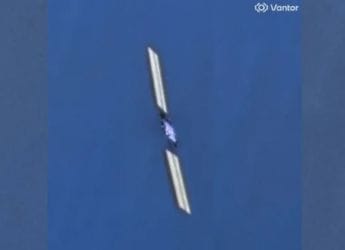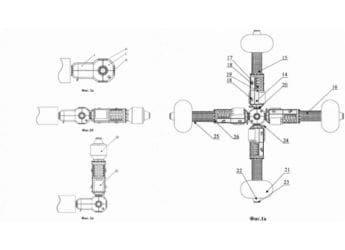- Home
- Science
- Science News
- Giant Horned Dinosaur Fossils Rediscovered in Egypt, WWII Lost Treasures
Giant Horned Dinosaur Fossils Rediscovered in Egypt, WWII Lost Treasures
Explore the rediscovery of giant horned dinosaur fossils in Egypt, lost during WWII.

Photo Credit: Unsplash/Edwin Chen
Ernst Stromer categorized the fossils, linking them to Algerian specimens
Fossil evidence of a massive horned dinosaur has been rediscovered through previously unseen photographs of remains destroyed during World War II. The dinosaur, named Tameryraptor markgrafi, lived approximately 95 million years ago in what is now Egypt. Spanning an estimated length of 33 feet, the species is considered one of the largest known terrestrial predators. The fossils were initially unearthed in 1914 in Egypt's Bahariya Oasis and housed in Germany before being lost in a wartime bombing.
Revelation Through Archived Images
According to the study published in PLOS One, the fossils had been mistakenly classified as belonging to the Carcharodontosaurus group. Newly discovered photographs, stored in the Huene Archive at the University of Tübingen, revealed features such as a prominent horn and an enlarged braincase, differentiating the specimen from others in the group. Maximilian Kellermann, a doctoral student at the Bavarian State Collection for Paleontology and Geology, noted the significant distinctions upon reviewing the photographs. Speaking to Live Science, he expressed initial confusion, followed by excitement as the differences became apparent.
Historical Context and Classification Changes
The fossils were originally categorised by German paleontologist Ernst Stromer, who associated them with specimens from Algeria. Over time, additional Carcharodontosaurus fossils were discovered, with a skull from Morocco becoming the representative specimen for the group. However, comparisons of Stromer's documentation and illustrations with the archived photographs revealed substantial variances, prompting the classification of a new genus and species.
Implications for Dinosaur Diversity
Researchers believe this finding highlights a richer diversity of dinosaur life in North Africa than previously understood. Kellermann suggested further exploration of Stromer's archives could provide new insights into other species from the region, such as Deltadromeus and Spinosaurus, which may also require reclassification. These findings underscore the importance of revisiting historical data to refine knowledge of prehistoric ecosystems.
Get your daily dose of tech news, reviews, and insights, in under 80 characters on Gadgets 360 Turbo. Connect with fellow tech lovers on our Forum. Follow us on X, Facebook, WhatsApp, Threads and Google News for instant updates. Catch all the action on our YouTube channel.
Related Stories
- Samsung Galaxy Unpacked 2025
- ChatGPT
- Redmi Note 14 Pro+
- iPhone 16
- Apple Vision Pro
- Oneplus 12
- OnePlus Nord CE 3 Lite 5G
- iPhone 13
- Xiaomi 14 Pro
- Oppo Find N3
- Tecno Spark Go (2023)
- Realme V30
- Best Phones Under 25000
- Samsung Galaxy S24 Series
- Cryptocurrency
- iQoo 12
- Samsung Galaxy S24 Ultra
- Giottus
- Samsung Galaxy Z Flip 5
- Apple 'Scary Fast'
- Housefull 5
- GoPro Hero 12 Black Review
- Invincible Season 2
- JioGlass
- HD Ready TV
- Laptop Under 50000
- Smartwatch Under 10000
- Latest Mobile Phones
- Compare Phones
- Huawei Nova 15
- Huawei Nova 15 Pro
- Huawei Nova 15 Ultra
- OnePlus 15R
- Realme Narzo 90x 5G
- Realme Narzo 90 5G
- Vivo S50 Pro Mini
- Vivo S50
- Asus ProArt P16
- MacBook Pro 14-inch (M5, 2025)
- Huawei MatePad 11.5 (2026)
- OnePlus Pad Go 2 (5G)
- Huawei Watch 10th Anniversary Edition
- OnePlus Watch Lite
- Acerpure Nitro Z Series 100-inch QLED TV
- Samsung 43 Inch LED Ultra HD (4K) Smart TV (UA43UE81AFULXL)
- Asus ROG Ally
- Nintendo Switch Lite
- Haier 1.6 Ton 5 Star Inverter Split AC (HSU19G-MZAID5BN-INV)
- Haier 1.6 Ton 5 Star Inverter Split AC (HSU19G-MZAIM5BN-INV)

















